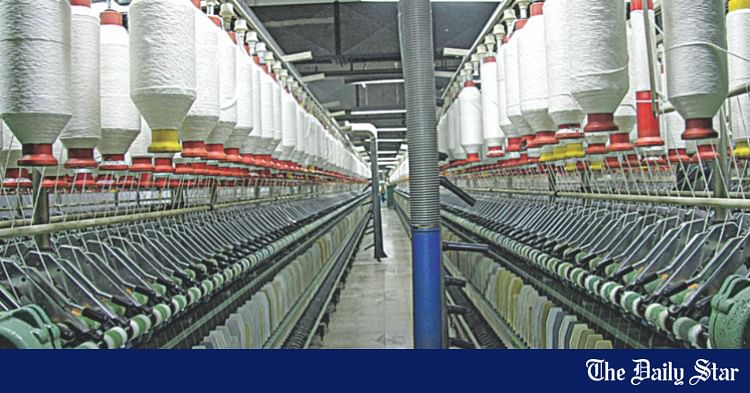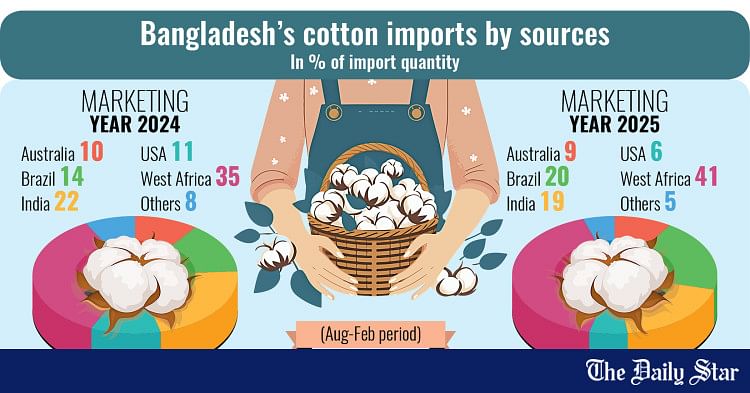- Copy to clipboard
- Thread starter
- #286
Saif
Senior Member
- Jan 24, 2024
- 11,442
- 6,412
- Origin

- Residence

- Axis Group


Commerce ministry requests NBR to restrict yarn imports through land ports
The commerce ministry stated that yarn imports via land ports have caused significant losses to the domestic textile industry
Commerce ministry requests NBR to restrict yarn imports through land ports

The commerce ministry has suggested the revenue authority take steps to restrict yarn imports through land ports to protect the local textile and spinning sector.
In a letter to the National Board of Revenue (NBR) on March 27, the commerce ministry stated that yarn imports via land ports have caused significant losses to the domestic textile industry.
It said that lower values of yarn imported through land ports are declared compared to yarn imported through Chittagong port.
Local manufacturers are unable to compete with the yarn imported through land ports.
As such, it recommended the NBR take measures to bar imports through the land ports.
Last week, textile millers urged the government to take action, stating that the domestic yarn industry is struggling to survive.
Yarn imports from India are permitted through seaports and four land ports—Benapole, Sonamasjid, Bhomra, and Banglabandha.
The government had allowed yarn imports through these ports in January 2023 to meet a sudden surge in demand following the Covid-19 pandemic.
Currently, yarn worth around Tk 100 billion is stockpiled in local mills, as India continues to dump yarn at lower prices, millers said.
The commerce ministry has suggested the revenue authority take steps to restrict yarn imports through land ports to protect the local textile and spinning sector.
In a letter to the National Board of Revenue (NBR) on March 27, the commerce ministry stated that yarn imports via land ports have caused significant losses to the domestic textile industry.
It said that lower values of yarn imported through land ports are declared compared to yarn imported through Chittagong port.
Local manufacturers are unable to compete with the yarn imported through land ports.
As such, it recommended the NBR take measures to bar imports through the land ports.
Last week, textile millers urged the government to take action, stating that the domestic yarn industry is struggling to survive.
Yarn imports from India are permitted through seaports and four land ports—Benapole, Sonamasjid, Bhomra, and Banglabandha.
The government had allowed yarn imports through these ports in January 2023 to meet a sudden surge in demand following the Covid-19 pandemic.
Currently, yarn worth around Tk 100 billion is stockpiled in local mills, as India continues to dump yarn at lower prices, millers said.







